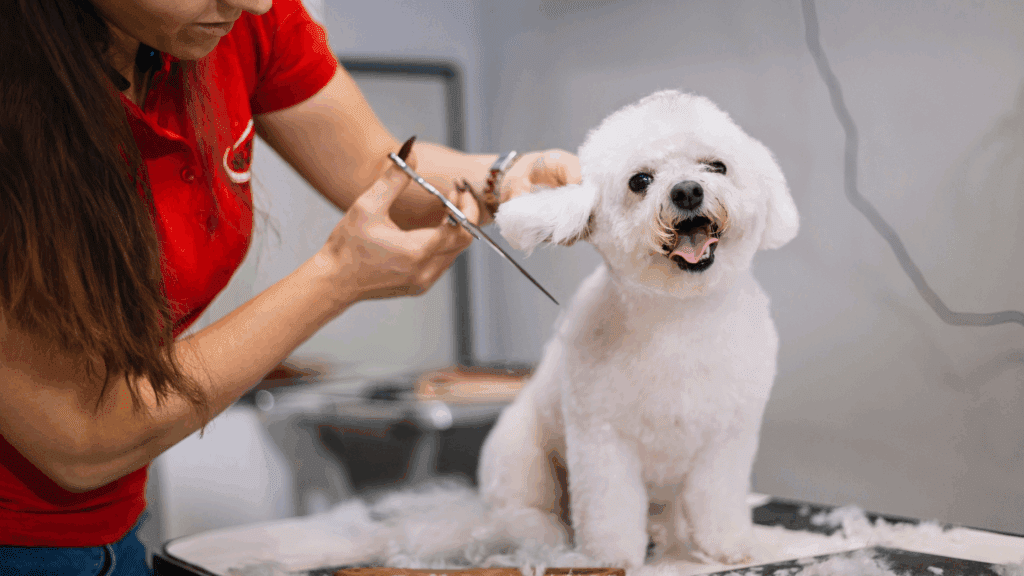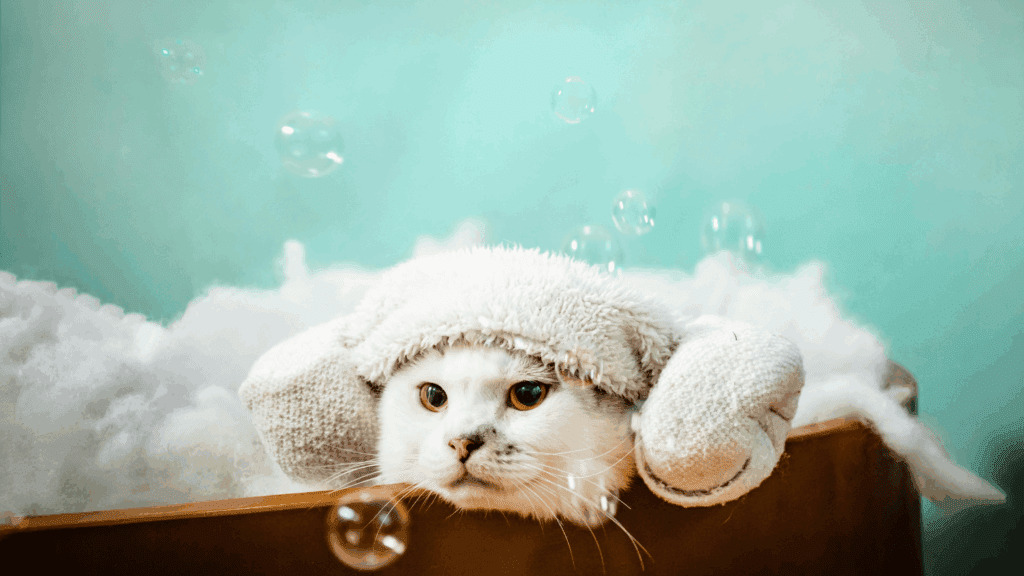Tick Troubles? What to do if your Dog has Ticks
When it comes to our furry companions, their well-being is of utmost importance. Dogs are not just pets, they’re part of the family. So, it’s essential to be prepared and informed about common issues that can affect their health, like ticks.
Ticks are tiny, spider-like parasites that latch onto dogs and feed on their blood — and the sooner they are removed, the lower the risk of disease transmission. Some species of ticks carry serious illnesses such as Lyme disease, ehrlichiosis, babesiosis or tick paralysis, so regular checks and prompt action are essential. If you discover a tick on your dog, the key steps are safe removal, preserving the specimen (in case veterinary testing is needed), and close monitoring for signs of illness.
In this detailed blog content, we will explore everything you need to know about ticks and what to do if your dog has a tick.

Introduction
Ticks are tiny arachnids that feed on the blood of animals, including dogs. They are commonly found in grassy and wooded areas and can attach themselves to your dog, causing discomfort and potentially transmitting diseases. This guide will walk you through the entire process, from identifying ticks on your dog to safe removal, prevention, and treatment.
Identifying Ticks on Your Dog
The first step in addressing a tick issue is learning how to identify these pesky parasites. Ticks come in various shapes and sizes, but they all share some common characteristics. They are typically small, ranging from the size of a pinhead to a small button. Here’s how to identify ticks on your dog:
- Color: Ticks can range in color from brown to reddish-brown, with some variations based on their species and feeding stage.
- Shape: They have an oval or teardrop-shaped body, which can expand when they feed.
- Legs: Ticks have eight legs, which are visible when they attach themselves to your dog.
- Size: The size of a tick can vary, but they are typically small, especially when unfed. Engorged ticks can be larger.
- Location: Ticks are often found in areas with less hair, such as the head, neck, ears, and paws.
The Dangers of Ticks
Understanding the potential dangers of ticks is crucial. These tiny arachnids can transmit diseases to your dog, some of which can be severe. Common tick-borne diseases in dogs include Lyme disease, anaplasmosis, ehrlichiosis, and Rocky Mountain spotted fever. These diseases can lead to symptoms such as fever, joint pain, lethargy, and loss of appetite.
Safe Tick Removal Techniques
If you discover a tick on your dog, it’s essential to remove it correctly. Improper removal can lead to complications. Here’s a step-by-step guide to safe tick removal:
- Gather Supplies: You’ll need fine-tipped tweezers, gloves, and antiseptic.
- Prepare: Put on your gloves to protect yourself from potential pathogens.
- Grasp the Tick: Use the tweezers to grasp the tick as close to the skin’s surface as possible.
- Pull Steadily: Pull upward with steady, even pressure. Make sure you remove the entire tick and avoid twisting or crushing it.
- Disinfect: After removal, disinfect the bite area and the tweezers with antiseptic.
Preventative Measures
Preventing tick bites is always better than dealing with them later. Consider the following preventive measures:
- Tick Repellents: Consult your veterinarian for the most suitable tick repellent products for your dog. They may recommend spot-on treatments, oral medications, or tick collars.
- Regular Grooming: Regularly groom your dog to check for ticks and remove them promptly.
- Tick Collars: Tick collars can provide long-term protection for your dog, and they are easy to use.
Monitoring Your Dog’s Health
After removing a tick, it’s essential to monitor your dog for any signs of illness. Some tick-borne diseases may not show symptoms immediately. Watch for the following signs and consult your veterinarian if you notice any of them:
- Fever
- Joint Pain
- Lethargy
- Loss of Appetite
Home Remedies for Tick Bites
For minor tick bites that don’t require immediate veterinary attention, you can use home remedies to help your dog:
- Clean the Affected Area: Use mild soap and water to clean the tick bite area.
- Apply Antiseptic: Apply an antiseptic to reduce the risk of infection.
- Observe: Keep a close eye on your dog for any changes in behavior or signs of infection. If you have concerns, contact your veterinarian.
Professional Vet Care
If you’re unsure about tick removal or your dog’s health, it’s best to seek professional vet care. Veterinarians can provide guidance, prescribe appropriate medications, and conduct necessary tests to ensure your dog’s well-being.
Tick-Related Diseases
Let’s delve deeper into the common tick-borne diseases in dogs:
Lyme Disease:
Symptoms: Lameness, fever, lethargy, and swollen joints.
Treatment: Antibiotics prescribed by a veterinarian.
Anaplasmosis:
Symptoms: Fever, joint pain, and lethargy.
Treatment: Antibiotics prescribed by a veterinarian.
Ehrlichiosis:
Symptoms: Fever, loss of appetite, and bleeding disorders.
Treatment: Antibiotics prescribed by a veterinarian.
Rocky Mountain Spotted Fever:
Symptoms: Fever, joint pain, and neurological issues.
Treatment: Antibiotics prescribed by a veterinarian.
Importance of Tick Control
Regular tick control is crucial to prevent tick infestations. Consult your veterinarian for recommendations on the most effective tick prevention methods for your specific location. They can help you choose the right products, such as spot-on treatments, oral medications, or tick collars.
Tips for Outdoor Activities
If you and your dog enjoy spending time outdoors, take precautions to minimize tick exposure:
- Avoid Tick-Prone Areas: Stay away from tall grass and wooded areas, where ticks are commonly found.
- Use Tick Repellent Products: Apply tick repellent products designed for dogs before heading outdoors.
- Check Your Dog: After outdoor activities, thoroughly check your dog for ticks, especially in tick-prone areas.
Cleaning and Sanitizing
If your dog has had a tick infestation, it’s essential to clean and sanitize your home and your dog’s belongings to prevent re-infestation:
- Wash Bedding: Launder your dog’s bedding, toys, and grooming tools.
- Vacuum: Vacuum your home to remove any potential tick hiding places.
- Yard Maintenance: Keep your yard well-maintained to reduce tick habitats.
Natural Tick Repellents
While there are commercial tick repellents, some pet owners prefer natural alternatives. Here are a few natural tick repellents for dogs:
- Apple Cider Vinegar: Diluted apple cider vinegar can be applied to your dog’s coat.
- Neem Oil: Neem oil is believed to have tick-repelling properties.
Remember that natural remedies may not be as effective as commercial products, so consult your veterinarian for guidance.
Conclusion
Ticks are a common concern for dog owners, but with the right knowledge and precautions, you can protect your furry friend. From identifying ticks and safe removal to prevention and treatment, this guide has covered it all. Remember that responsible pet ownership includes safeguarding your dog from these tiny but potentially harmful creatures.
Frequently Asked Questions (FAQs)
1. How can I tell if my dog has a tick-borne disease?
If your dog exhibits symptoms like fever, joint pain, lethargy, or loss of appetite, contact your veterinarian for a thorough examination and possible testing.
2. Can I use human tick repellent on my dog?
No, it is not recommended to use human tick repellents on dogs. Use products specifically designed for dogs to avoid potential adverse reactions.
3. How often should I check my dog for ticks?
Check your dog for ticks after every outdoor activity, and perform a thorough inspection regularly, especially if you live in a tick-prone area.
4. What is the best way to prevent ticks on my dog?
The best way to prevent ticks is to consult your veterinarian for recommendations on the most effective tick prevention methods for your location. They can help you choose the right products for your dog.
5. Are there natural remedies for tick prevention?
Some natural remedies, such as apple cider vinegar and neem oil, are believed to help repel ticks. However, always consult your veterinarian before using them on your dog.















